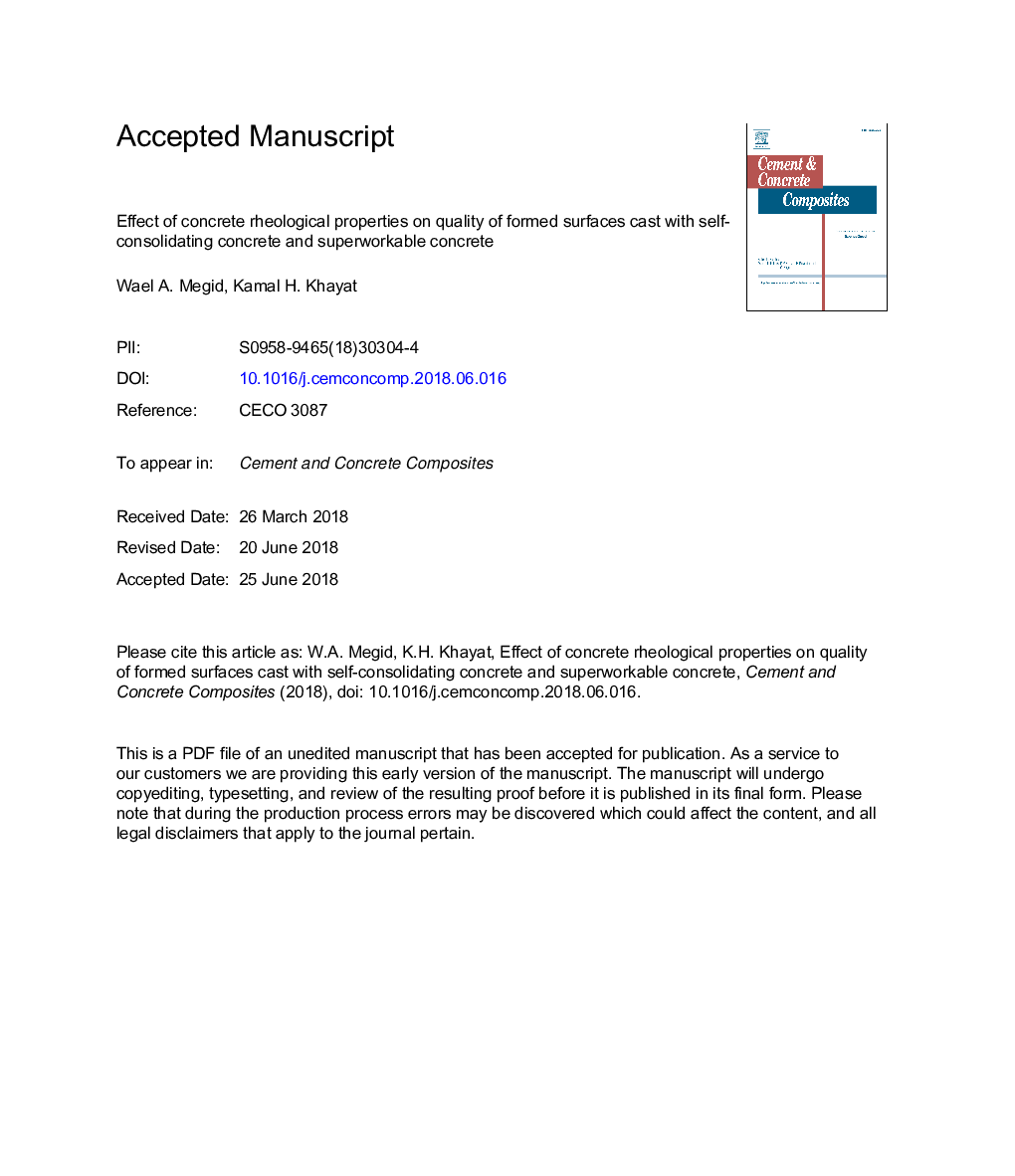| Article ID | Journal | Published Year | Pages | File Type |
|---|---|---|---|---|
| 7883406 | Cement and Concrete Composites | 2018 | 31 Pages |
Abstract
An experimental program was undertaken to evaluate the effect of rheology of self-consolidating concrete and superworkable concrete on formed surface quality. In total, 31 mixtures with different workability and rheological properties were cast in a specially designed Z-shaped column without any mechanical consolidation. Surface defects, including surface air voids, signs of bleeding, segregation, and low filling ability were evaluated using a proposed image analysis methodology. The proposed method was successfully compared to other approaches that mainly target the detection of surface voids. Statistical models were developed between surface defect characteristics of formed surfaces cast with self-consolidating concrete and superworkable concrete and the rheological properties of the concrete. Concrete mixtures with yield stress lower than 25â¯Pa were found to develop superior surface finish. It was also observed that a prolonged delay in cement hydration of mixtures with yield stress lower than 50â¯Pa could lead to surface defects associated with bleeding. Mixtures with yield stress greater than 100â¯Pa exhibited considerable surface defects caused by insufficient filling ability of the concrete in the absence of mechanical consolidation. Finally, surface defects resulting from segregation were found with flowable concrete with plastic viscosity lower than 10â¯Paâ¯s and yield stress lower than 100â¯Pa.
Related Topics
Physical Sciences and Engineering
Engineering
Industrial and Manufacturing Engineering
Authors
Wael A. Megid, Kamal H. Khayat,
